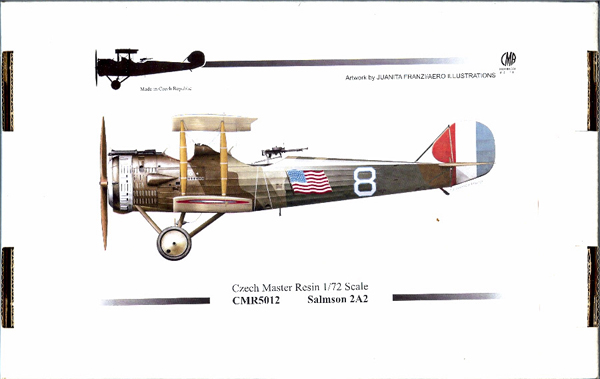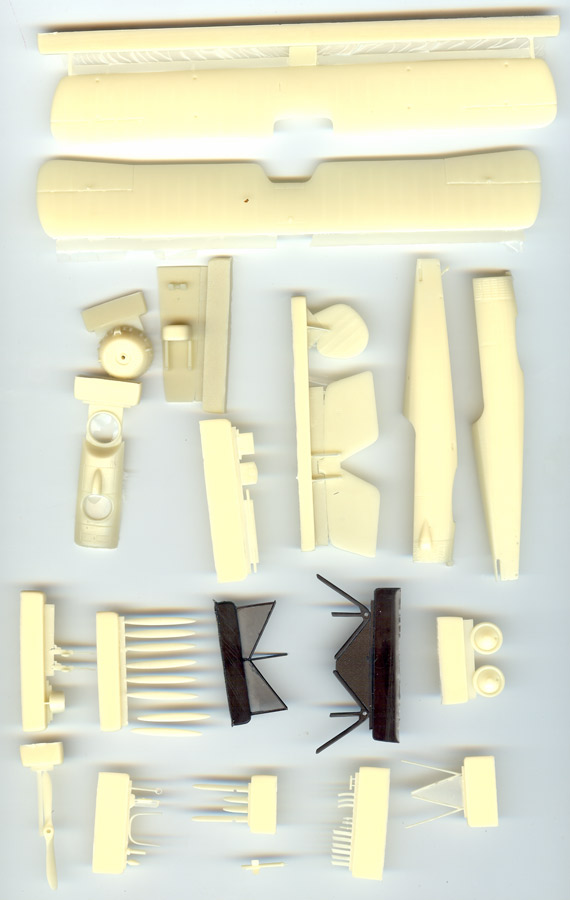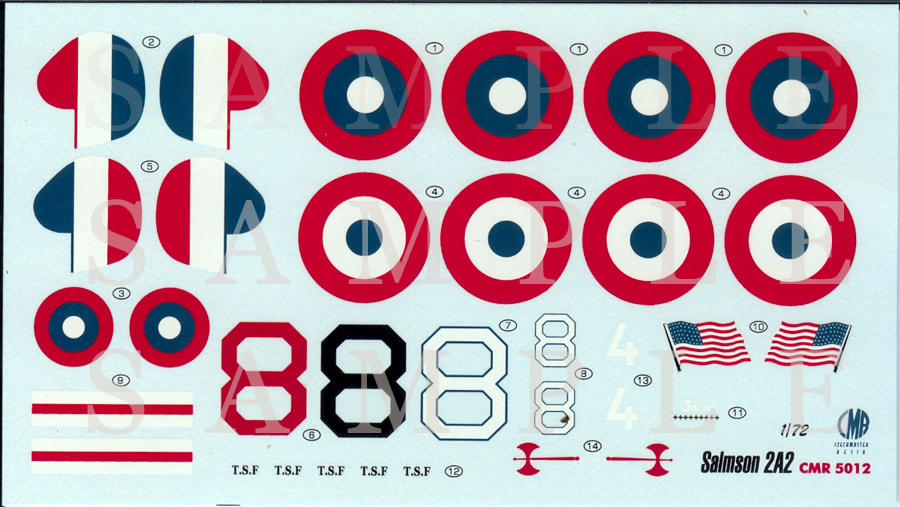
CMR 1/72nd Salmson 2A2
By Pedro Nuno Soares
Latest offering from CMR range of reissues of WW1 resin aircraft kits is one that, as far as I know, and as is also the case with many of this producer’s WW1 range, is the only current game in town, in any type of kit form, and one that I’m sure will be of particular interest to those of us who have a soft spot for French aircraft of the war to end all wars.
The Salmson 2A2, such is the name of the flying machine these lines refer to, was a rather important type in the inventory not only of the Aeronautique Militaire but also of the American Expeditionary Force, where it performed a multitude of roles, spanning from reconnaissance and artillery spotting to ground attack. A dual control training version was also built and the type would eventually know some post war use with countries such as Belgium, Czechoslovakia, Russia, Spain, Peru and Japan, where between 600 to 1000 (sources say) were license built, adding on to the total 3,200 aircraft produced in France, thus putting total production numbers in the very significant region of 4000 machines.
Of note, concerning the Japanese built machines, is the fact that 12 of them would be used by Japan Air Lines, what widens the specter of modelers this kit might appeal to.
The Kit
Produced in the usual CDL colored polyurethane resin that is now the hallmark of most resin kits, the 20+ years old masters have again been put to use to produce a new set of moulds for vacuum chamber casting, and upon inspecting the 54 parts comprised in the sturdy cardboard box, topped with a profile by Juanita Franzi, it is clear that all parts are well cast, my sample presenting no evidence of miscasting or air bubbles.
Inside the box, besides the well packed parts enclosed in the usual CMR plastic bag “cells”, one is graced by 6 A4 instruction pages, 3 of them being used up by the assembly instructions (in exploded form) and rigging diagram, while the other 3 include a 5 view GA and painting instructions for the 3 options catered for by the extremely well printed decal sheet. These are one Czechoslovak machine, a French 2A2 of SAL 33 and an American example of USAS 1st Aero Squadron, all 3 of them sharing the same French 5 tone camouflage painting (and the same type of blue in the markings, an option that replicates Juanita Franzi’s profiles of these airplanes included in Salmson Aircraft of World War 1, Flying Machines Press, 2003 )Of note is the fact that the colour references are given in both Methuen and pantone codes, what, with the help of a google search, will clear all doubts one might have.
Contrary to the latest reissues of WW1 types, CMR chose not to include in this kit a PE fret, so this time you will have to either scratch the seat belts of get them from one of the aftermarket PE sets that by now most modelers have on their parts inventory.
The smaller resin detail parts included in the kit, like the control column and the Lewises and Vickers machine guns look perfectly useable and the cockpit area has enough parts to make it look busy enough out of the box, even though you might want to add some evidence of the inner wooden structure to the sides of the fuselage, with evergreen strip or stretched sprue.
A quick check of the parts against the drawings in the already mentions FMP Salmson book, which was published long after the master was created, reveals that the fuselage appears to be something like 2.5 mm too long at the rear end, but this can be easily dealt with by judicious sanding and reshaping of this particular area.The wings, on the contrary, seem to be ok spanwise and do have incorporated into them the slight 2.5º dihedral of the original. Nonetheless, the trailing edge at root of the lower wing, on the transition to the point where it meets the fuselage, should evolve along a gently formed diagonal, instead of a 90 degrees curve as presented in the kit, while the aileron tip has the wrong contour, which should be squarish with a round corner, not totally curved as presented.
The horizontal tailplane is spot on, but the rudder seems to be a couple of mm narrower in chord at its widest section when compared to the GAs used for checking.
These small inconsistencies with the drawings are no doubt due to the master having been molded after the 3 view GAs in the old Harleyford Reconnaissance Bomber Aircraft of the 1914-1918 war, which the kit parts match to perfection, with the exception of the fuselage which is still a wee bit too long at the rear end.
All resin struts look perfectly useable and the complex 6 strutted undercarriage (as well as the tailplane upper bracing structure) is provided in the more resistant black resin that CMR has used for struts requiring more rigidity than that provided by the PUR parts.
The rather complex and prominent louvre system that is a feature of Salmson cowlings is clearly and neatly molded into the fuselage parts and front cowling part, and the same can be said about the front end radiator shutter, which will easily be brought to life by a black wash over an aluminum coat.
So this is it. CMR has again delivered a quality product that in the ends of a competent modeler will yield a nice model of a rather neglected type. If one is really driven by accuracy, there are a few areas that will need a bit of additional attention, as I have pointed out above, but these are all solvable with regular modeling skills and the odd bit of plastic sheet, so there’s nothing preventing me from recommending this kit to modelers interested in the subject matter.
Thanks to CMR for the review sample.
References
- Salmson Aircraft of World War 1, Colin A. Owers, Jon S. Guttman, James J. Davilla, Flying Machines Press, 2001
- French Aircraft of the First World War, DR. James J. Davilla, Arthur M Soltan; Flying Machines Press, 1997
- Reconnaisance & Bomber Aircraft of the 1914-1918 War, W.M. Lamberton, Harleyford Publications , 1962


